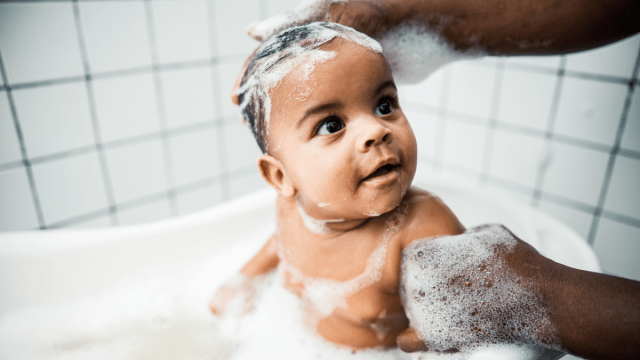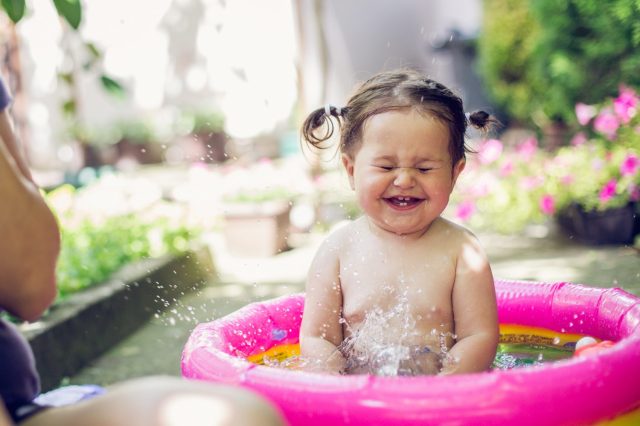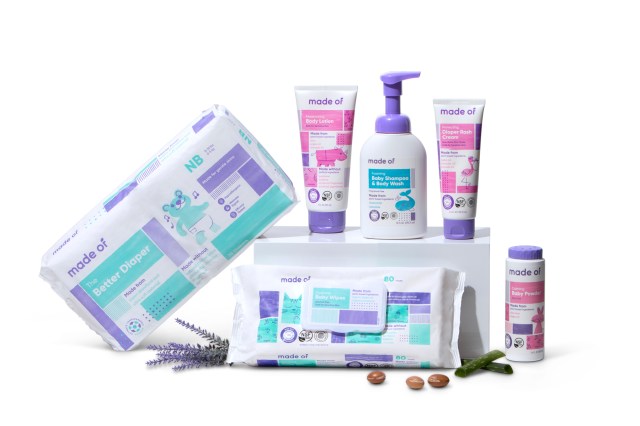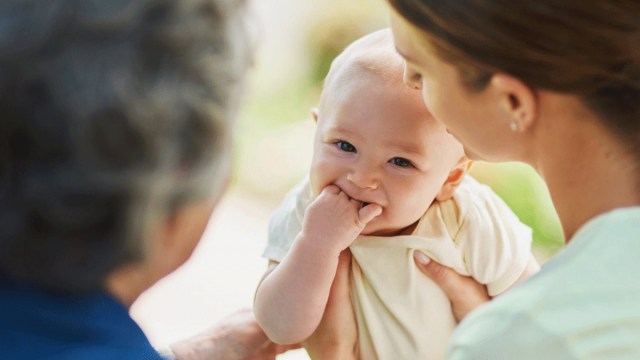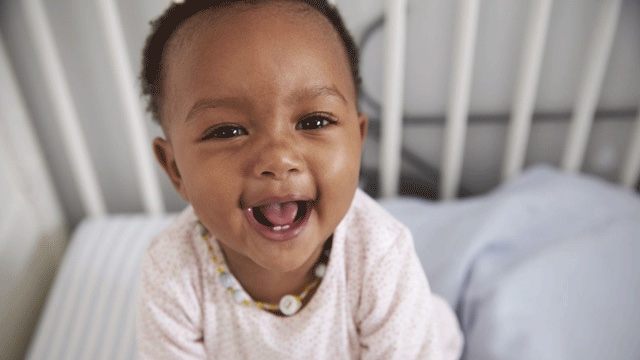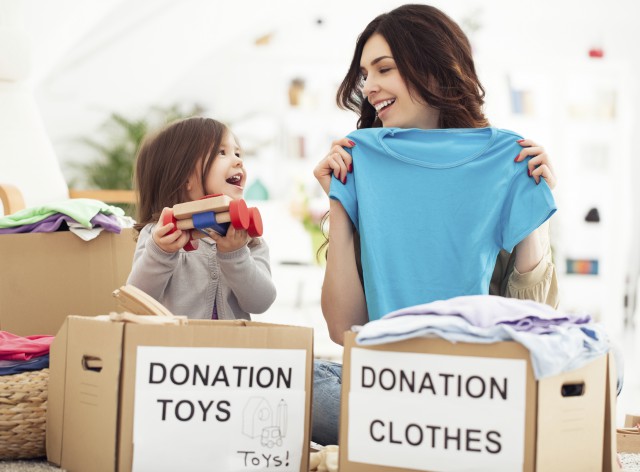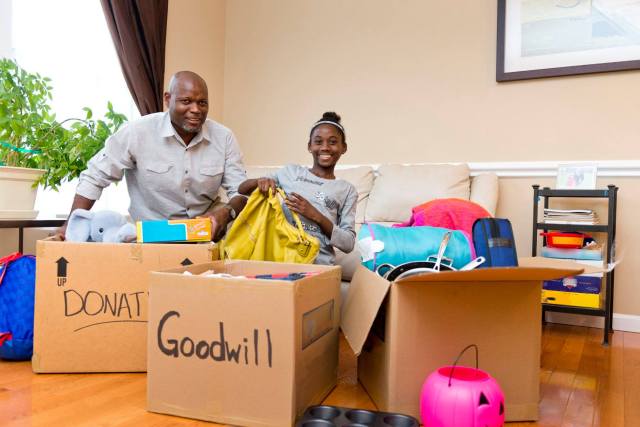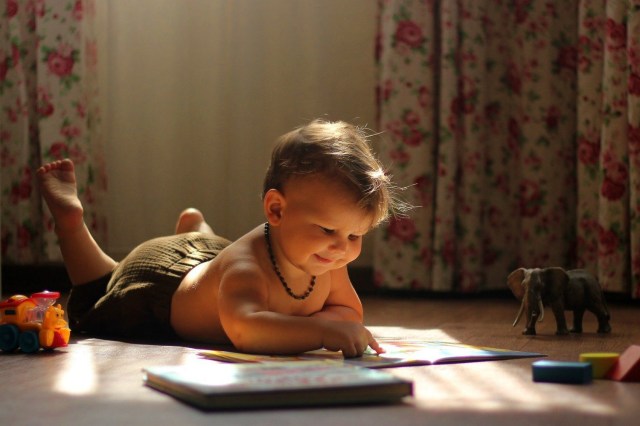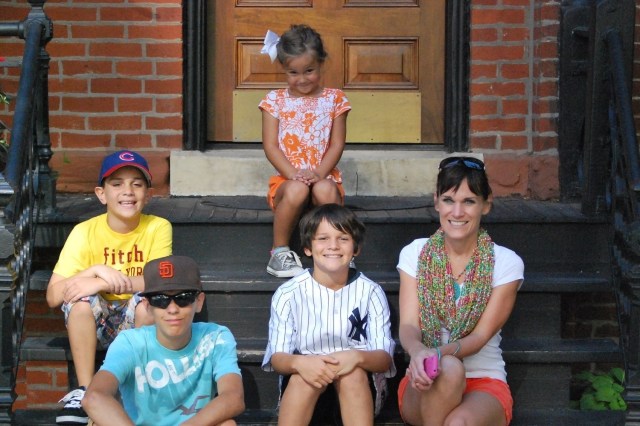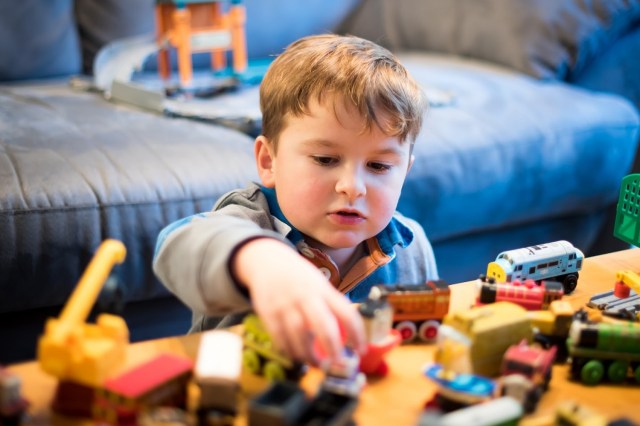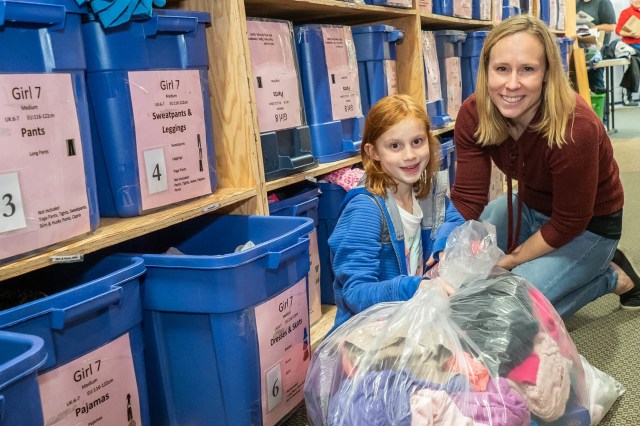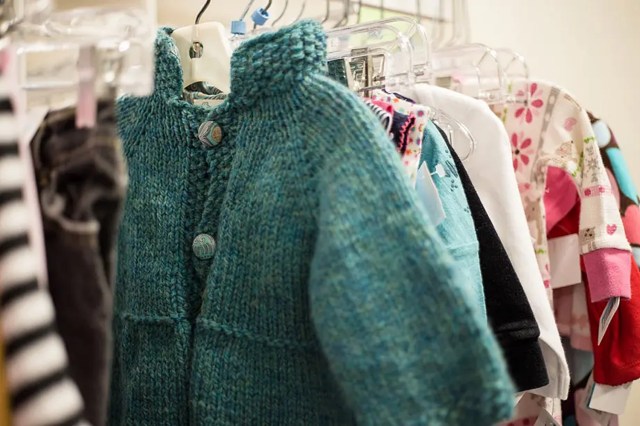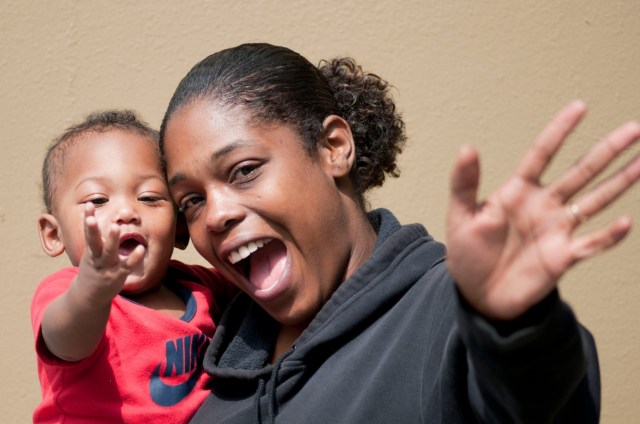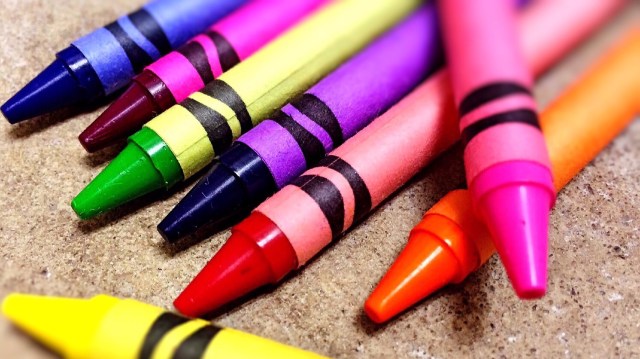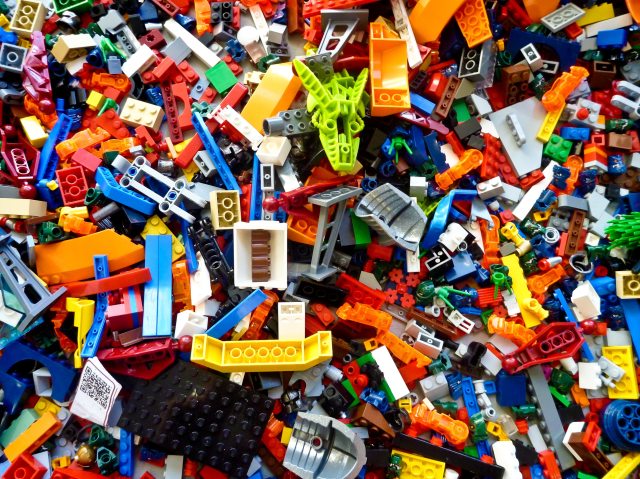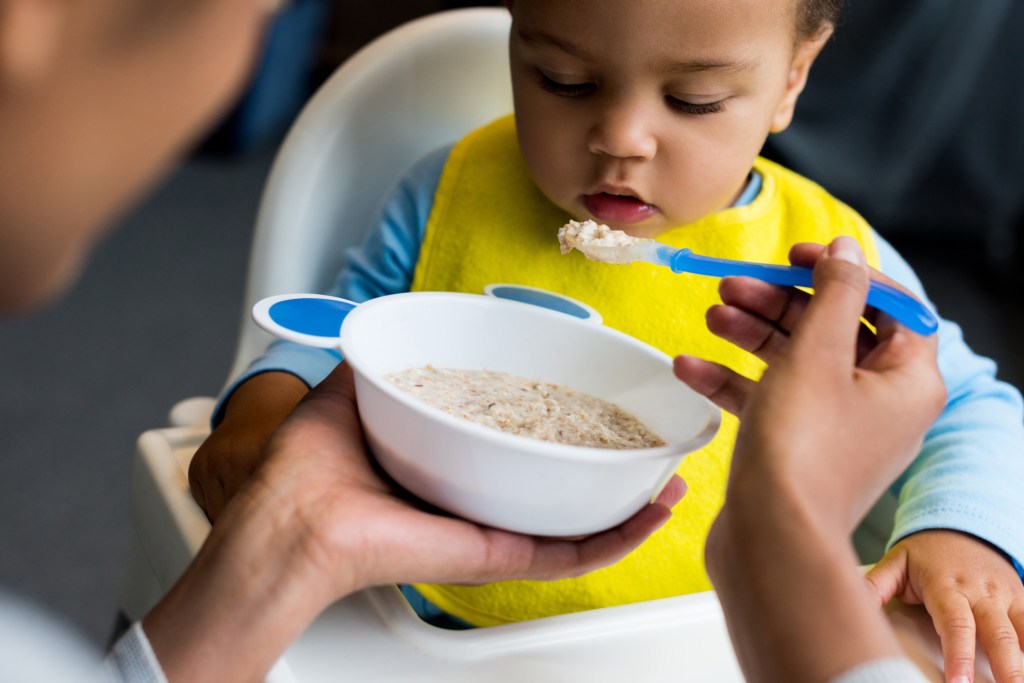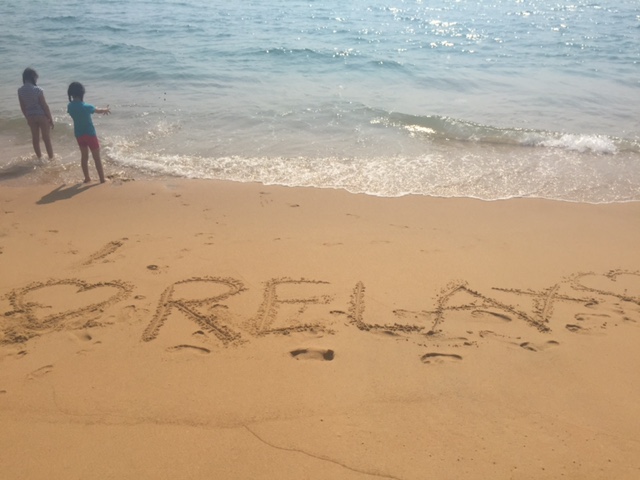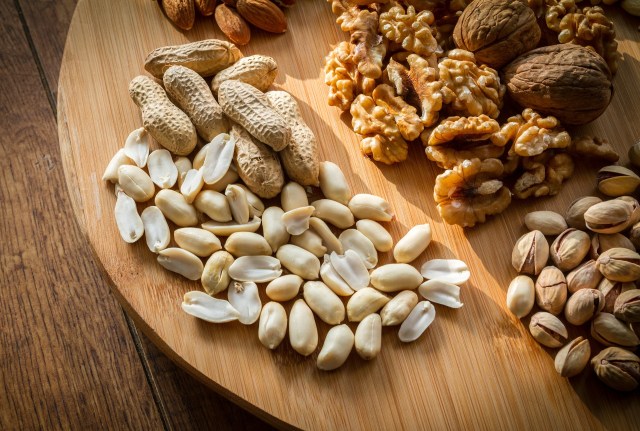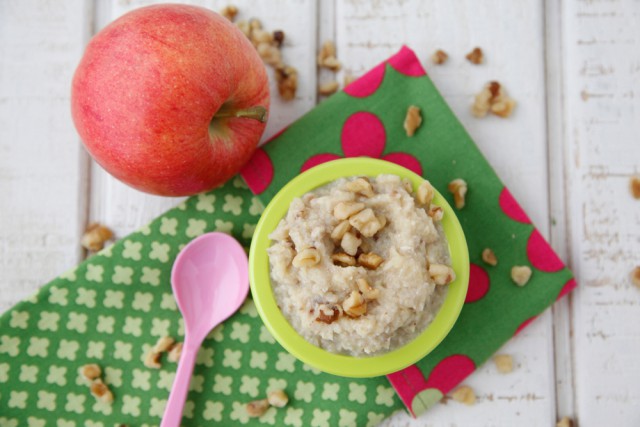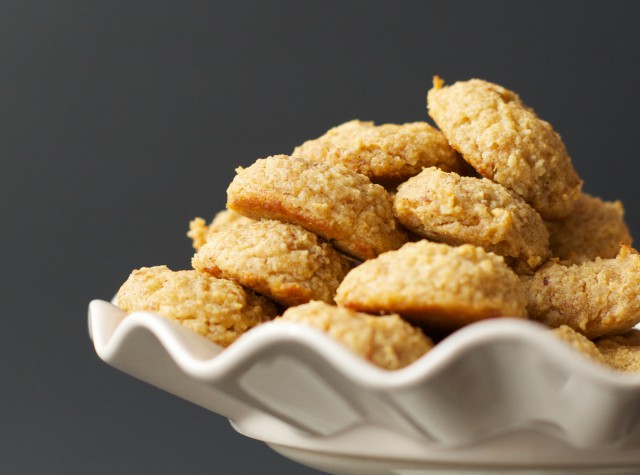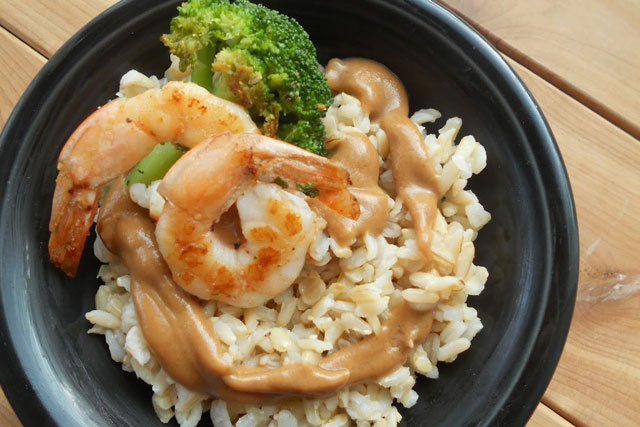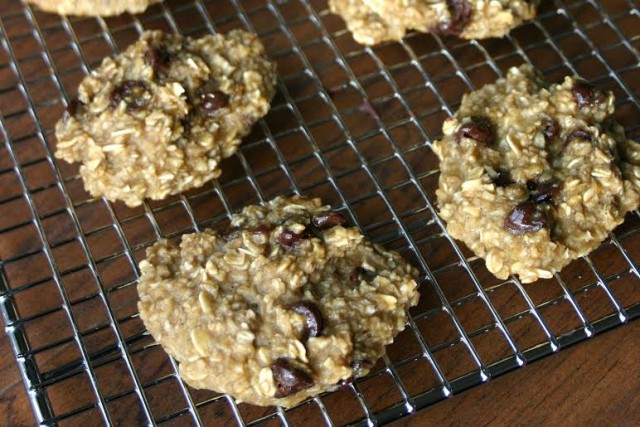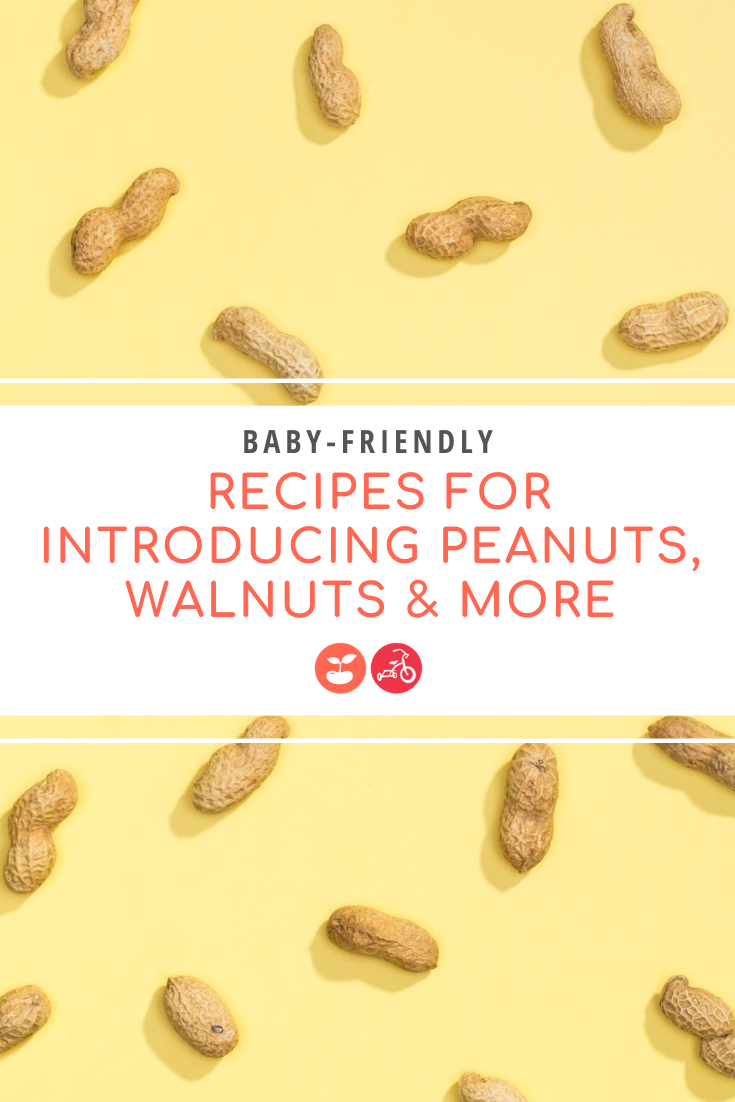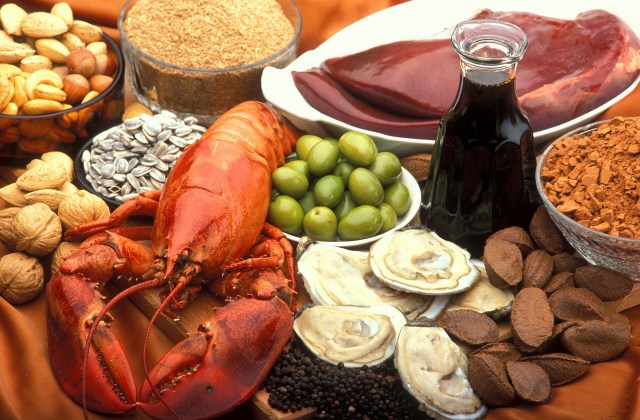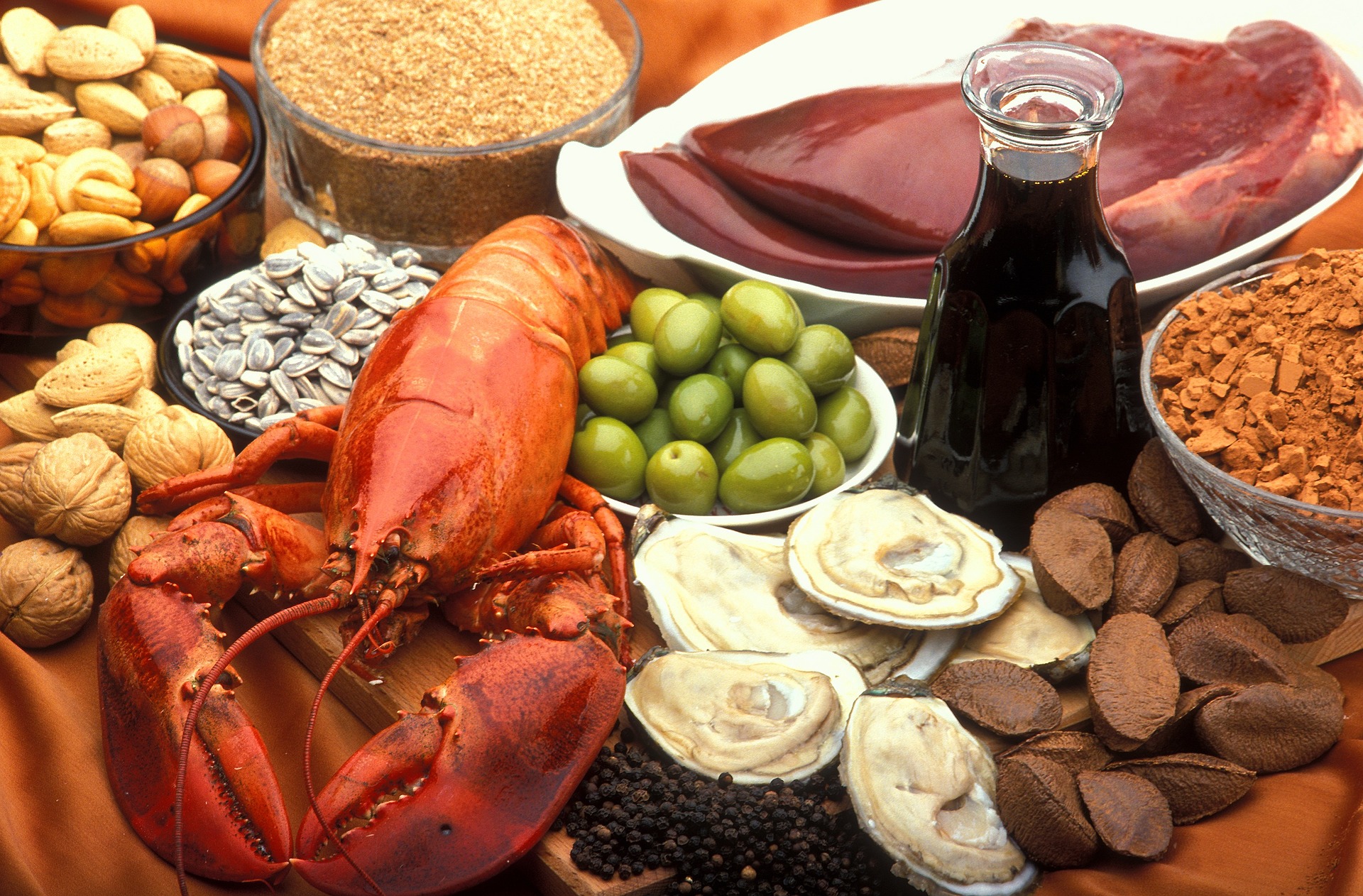Find a gentle baby shampoo, body wash, baby lotion, and more with this A-to-Z guide to natural skin care products for babies and toddlers. From skin-soothing, eczema-healing products and cradle cap shampoos to luxuriously scented body lotions and bubble baths, read on for the bathing and after-bath products each brand offers, yucky ingredients they’re formulated without, and more reasons why they’re worth checking out.
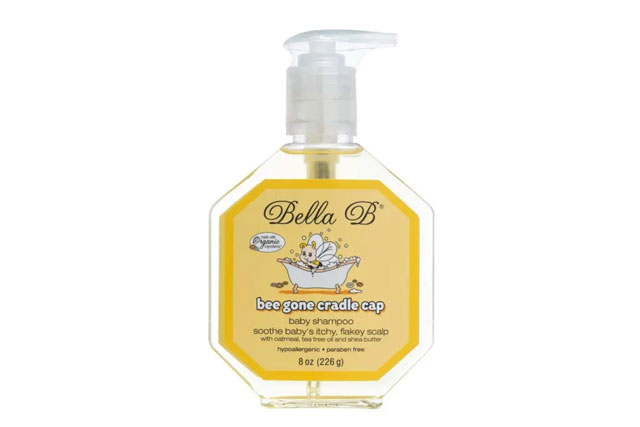
Bella B Naturals
What they offer: bubble bath, hair & body wash, cradle cap shampoo, hair detangler, conditioner, moisturizing lotion
Formulated without: parabens, animal by-products, petrolatum, lanolin, harsh chemicals
Why check them out: This broad line of baby products is formulated with flower extracts and moisturizing ingredients such as aloe vera, avocado and shea.
Bubbsi
What they offer: shampoo & wash, body cream, body balm, conditioner (to be released March 2021)
Formulated without: Parabens, phthalates, sulfates, mineral oils, dyes, synthetic fragrance, common natural irritants and allergens, nearly 1,400 ingredients currently banned in EU cosmetics
Why check them out: Organic coconut oil is the lead ingredient in Bubbsi’s moisturizing skincare products, which come in super cute silicone bottles shaped like animals. Save money by refilling with the value-size refills sold on the site.
Burts Bees
What they offer: baby shampoo & wash, bubble bath, body lotion, buttermilk soap, baby oil, multipurpose ointment
Formulated without: phthalates, parabens, petrolatum, SLS
Why check them out: A trusted name in natural skincare, the Burt’s Bees line of baby products is packed full of good-for-you ingredients such as cocoa butter, royal jelly and aloe.
California Baby
What they offer: shampoo & body wash, conditioner, hair detangler, bubble bath
Formulated without: petroleum contaminants, synthetic fragrances, parabens, SLS, sulfates, dyes, formaldehyde carriers, phthalates, gluten, oat, soy, dairy, nuts (some products contain coconut)
Why check them out: Shop by scent, skin issue or allergy concern to find your favorite bath products from this extensive line. Founded in 1995, this woman-owned brand is committed to safe baby products, even growing its own calendula on a certified organic farm in Santa Barbara.
CeraVe
What they offer: body wash & shampoo, moisturizing cream, moisturizing lotion, healing ointment
Formulated without: parabens, sulfates, phthalates, fragrance
Why check them out: CeraVe contains three types of ceramides, which are lipids that help restore the skin’s barrier and retain moisture, and hydrating hyaluronic acid.
Dapple Baby
What they offer: shampoo & body wash, bubble bath, body lotion
Formulated without: parabens, sulfates, phthalates, mineral oil, synthetic dyes & fragrances, SLS, MEA, DEA or TEA
Why check them out: You may know Dapple Baby for its amazing bottle & dish soap, and its bath products are just as good. The bath products use plant-based formulas, with plant-derived ingredients and essential oils, and a prebiotic botanical blend for gentle cleansing and moisturizing.

Dr. Bronner’s
What they offer: castile liquid soap, castile bar soap, body balm
Formulated without: synthetic preservatives, petrochemical detergents, parabens, sulfates, phthalates, fragrance, foaming agents
Why check them out: The fragrance-free baby line from family favorite Dr. Bronner’s contains organic and fair-trade ingredients such as coconut, olive, hemp and jojoba oils for safe and effective cleaning and moisturizing.
Earth Mama Organics
What they offer: body lotion, face balm, baby wash, baby oil
Formulated without: artificial fragrance, artificial preservatives, antibacterial chemicals, phthalates, parabens, sulfates
Why check them out: The calendula plant, known for being anti-inflammatory and mild for sensitive baby skin and hair, is the key ingredient in this line, which features scented and unscented products.
EllaOla
What they offer: shampoo & body wash, baby lotion, massage oil
Formulated without: parabens, pthalates, sulfates, oxybenzone, steroids, synthetic fragrances, PEGs, dyes, formaldehyde releasers, propylene glycol
Why check them out: This science-based, plant-based skincare brand was created with the help of an advisory board including experts in dermatology, pediatrics and parenting.
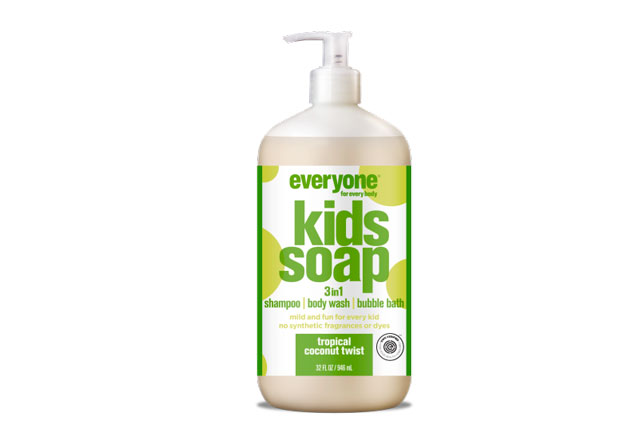
EO Products: Everyone for Every Body
What they offer: kids soap (3 in 1 shampoo, body wash and bubble bath), body lotion
Formulated without: parabens, phthalates, synthetic fragrances, artificial colors and dyes, sodium lauryl sulfate, aluminum, propylene glycol, polysorbates
Why check them out: The kids line (and all EO Products) is made from non-GMO ingredients and infused with pure essential oils, making the scents fresh and kid-friendly. EWG Verified, the products are manufactured in-house in a zero-waste Northern California facility. The extra large 32 ounce easy-pump size and 3 in 1 soaps make this an affordable pick both parents and kids will love.
Era Organics
What they offer: baby wash, baby balm, body lotion
Formulated without: parabens, sulfates, mineral oil, SLS, dyes, fragrance, gluten, harsh chemicals
Why check them out: Era Organics’ products are cruelty-free and filled with food-grade nutrients.
Evereden
What they offer: shampoo & body wash, moisturizing lotion
Formulated without: parabens, phthalates, sulfates, synthetic fragrance, cocamidopropyl betaine, coca midopropyl hydroxysultaine, phenoxyethanol, the 1,400 ingredients prohibited in the EU
Why check them out: Created by Ivy League-educated dermatologists, the line is filled with plant-based ingredients from around the world that have a top rating on Environmental Working Group’s Skin Deep Database.
Exederm Skincare
What they offer: eczema wash, eczema lotion, eczema cream
Formulated without: parabens, phthalates, SLS, lanolin, propylene glycol, colors or dyes, cocamidopropyl betaine, fragrance
Why check them out: The line is devoted to dry, sensitive skin and soothing skin irritated by eczema or dermatitis. Each product has earned the Seal of Acceptance from the National Eczema Association.
Fairy Tales Hair Care
What they offer: shampoo, conditioner and styling products
Formulated without: parabens, sulfates, toxic chemicals, dairy, gluten, nuts
Why check them out: They have an array of products from non-toxic lice treatment, to hydration for curls to summer sun protection, so there’s something perfect for every hair type and circumstance.
Hello Bello
What they offer: shampoo & body wash, baby lotion, bubble bath
Formulated without: sulfates, SLS and SLES, synthetic fragrances, phthalates, parabens, formaldehyde donors, phenoxyethanol, petrolatum, mineral oil, PEGs, MEA, DEA, TEA and common allergens such as gluten, peanut and dairy
Why check them out: Cofounded by actors and married parents Kristen Bell and Dax Shepard, Hello Bello offers premium-quality, eco-friendly products at budget-friendly prices, thanks to an exclusive partnership with Walmart.
Healthybaby
What they offer: organic cotton diapers, shampoo & bodywash, eco-friendly laundry and cleaning products
Formulated without: parabens, phthalates, fragrances, optical brighteners and chlorine
Why check them out: Healthybaby was developed for healthy brains and boasts plant-based ingredients for baby’s skin along with food-grade quality standards. Healthybaby’s mantra is “fewer, better things” meaning they focus on reducing waste and clutter and ensure that their products are safe and of high quality.
The Honest Company
What they offer: shampoo & body wash, face & body lotion, conditioner, bubble bath, conditioning detangler, all-purpose balm, body oil, bar soap, balm and body wash for eczema-prone skin
Formulated without: sulfates, parabens, SLS, silicones, harsh chemicals, synthetic fragrances, formaldehyde carriers, MEA, DEA or TEA, PEGs, ethoxylates
Why check them out: Honest’s baby bath products come in four scents (orange vanilla, lavender, apricot and fragrance free), and you can save by buying bundles of products in a customizable subscription.
Li’l Goat’s
What they offer: goat’s milk soap, shampoo & body wash, body lotion, baby wipes, diaper rash ointment
Formulated without: parabens, sulfates, phthalates
Why check them out: Goat’s milk is ultra-moisturizing and gentle on sensitive skin. It naturally contains essential nutrients and vitamins A, B2, B3, B6, B12, and E. Li’l Goat’s collects fresh milk from farmers in Quebec and doesn’t test its finished product on animals.
Live Clean
What they offer: shampoo & body wash, body cream, body lotion, non-petroleum jelly, tearless shampoo & wash
Formulated without: SLS, phthalates, silicones, petrolatum, parabens, DEA, phosphates, dyes
Why check them out: The makers of this line of plant- and water-based ingredients source local organic ingredients and use recyclable packaging for their natural skin care products.
L’Occitane
What they offer: foaming cream, moisturizing milk cream, massage balm, fragrance water
Formulated without: phenoxyethanol, parabens, phthalates or silicones
Why check them out: The Shea Baby Care collection launched May 2019 and is just as luxe as their adult Shea line. 87% of the ingredients in this collection are naturally derived and tested under pediatric supervision and while the products include a fragrance they are hypoallergenic and formulated free of allergens.

Mustela
What they offer: Four product lines of body lotion, emollient cream, emollient balm, cradle cap cream, shampoo, bubble bath, cleansing milk, cleansing gel, cleaning cream, bath oil, face cream
Formulated without: parabens, phthalates, phenoxyethanol, ammonium lauryl sulfate, sodium lauryl sulfate, cyclotetrasiloxane, p-Phenylenediamine or related compounds, BHA, benzophenone, ethylhexyl methoxycinnamate, triclosan, alcohol
Why check them out: Mustela has conducted continued research in dermatology for more than 60 years; the company partners with dermatology, maternity and childcare professionals to further its skin expertise. The line features products for normal, dry, eczema-prone and very sensitive baby skin.
Noodle and Boo
What they offer: bar soap, body wash, shampoo, hair polish, body lotion, bubble bath hair & body wash, baby balm, ointment, cream rinse
Formulated without: parabens, phthalates, sulfates, PPGs, dye, GMOs, triclosan, formaldehyde donors, BPA, essential oils
Why check them out: This line specializes in bath products for children with eczema and sensitive skin. The company donates a portion of profits to children’s charities.
Peach Not Plastic
What they offer: shampoo and conditioner bars, facial cleansing bars, deodorant, 2-in-1 shampoo + body bars, hand + body bars
Formulated without: parabens, phthalates, SLS, SLES, silicones and artificial colorants
Why check them out: Vegan and cruelty-free natural skin care products, made with 100% natural fragrances, packaging features interactive games printed on the inside of cartons for a fun way to reuse
Pipette
What they offer: shampoo + body wash, baby oil, baby balm, baby lotion, eczema lotion
Formulated without: mineral oil, oxybenzone, sulfates, polyethylene glycol, parabens, formaldehyde releasers, phthalates, talc, retinyl palmitate, synthetic fragrance
Why check them out: Pipette’s products feature squalane, a version of squalene that restores skin’s natural balance. This deeply hydrating ingredient is derived from sustainably harvested Brazilian sugarcane.
Pleni Naturals
What they offer: hair & body wash, baby balm, baby oil
Formulated without: parabens, sulfates, phthalates, synthetic fragrances or other harmful chemicals
Why check them out: Cute, cartoony packaging shows off the organic fruit and vegetable ingredients in this line of natural skin care products, from apple & broccoli body wash to a berry and olive baby balm.
Puracy
What they offer: shampoo & body wash, bubble bath, body lotion
Formulated without: harsh chemicals, petroleum, animal-based ingredients
Why check them out: The line was created by a team of Ph.D. chemists, using plant- and natural mineral-based ingredients. To save money on your purchases, buy sets of Puracy’s products or sign up for a recurring subscription.
Shea Moisture
What they offer: bar soap, ointment, body lotion, shampoo, body wash
Formulated without: parabens, mineral oil, formaldehyde, phthalates, DEA, propylene, petroleum
Why check them out: The products from this family-owned company are ethically traded, sustainably produced and contain certified organic, natural and fair-trade ingredients.
TriDerma
What they offer: cleansing gel, moisturizer, eczema itch and dryness healing cream
Formulated without: fragrance, parabens, cortisone, steroids, sulfates, mineral oil, petrolatum, phthalates
Why check them out: Founded more than 25 years ago, Triderma’s products are based in a healing aloe vera complex.
VIVAIODAYS
What they offer: face & body lotion, balm gel, cleansing water, body wash & shampoo, leave-in conditioner and detangler
Formulated without: gluten, animal ingredients, animal-derived ingredients, BPA, dibutyl phthalates, BHA, heavy metals (lead, cadmium), chemical fertilizers and pesticides
Why check them out: The ingredients for the products in this line are inspired by centuries-old remedies from around the world, from conditioning tsubaki oil in the leave-in conditioner & detangler (inspired by Japan) to nourishing apricot oil in the face & body lotion (inspired by India). The line is rated COSMOS ORGANIC, the European equivalent of USDA certification. For each product sold, the company funds educational initiatives around the world.
Wash with Water
What they offer: shampoo & body wash, body lotion, hair detangling spray, balm, bubble bath, eczema cream, foam cleanser
Formulated without: petrochemicals, phthalates, sulfates, GMOs, PPGs, synthetic colors, formaldehyde donors, TEA, DEA, silicones, PEGS, dairy, egg, oat, lactoperoxidase, citrus seed extract, triclosan, synthetic dyes
Why check them out: The products in this line are made in small batches, tested by a third-party independent laboratory and packaged in eco-conscious containers.
Weleda
What they offer: shampoo & body wash, bar soap, body lotion, face cream, baby oil
Formulated without: parabens, chemical preservatives, preservatives, SLS, synthetic fragrances, phthalates, GMOs
Why check them out: Founded in 1921, Weleda creates natural skin care products produced using sustainable production processes and environmentally friendly practices. Its baby products feature calendula and mallow, both known for their soothing properties.
Zoe Organics
What they offer: baby bath tea, baby oil, body wash, balm, body cream
Formulated without: synthetic chemicals, fragrances, dyes, parabens, surfactants, phthalates, GMOs, fillers, gluten
Why check them out: The organic line prides itself on combining luxury and wellness with social responsibility.
Zoey Naturals
What they offer: body wash, body lotion, body butter, body oil
Formulated without: parabens, sulfates, phthalates
Why check them out: Created by a skincare pioneer for his baby daughter, this line is free of harsh chemicals, made only with gentle fragrances and made in the USA.
Make sure to capture all pics of your cleaned and creamed little cutie—and share them with your family and friends near and far—with the Tinybeans app. The secure platform puts parents in total control of who sees and interacts with photos and videos of their kids.
If you buy something from the links in this article, we may earn affiliate commission or compensation. Prices and availability reflect the time of publication.
All images courtesy of retailers.
